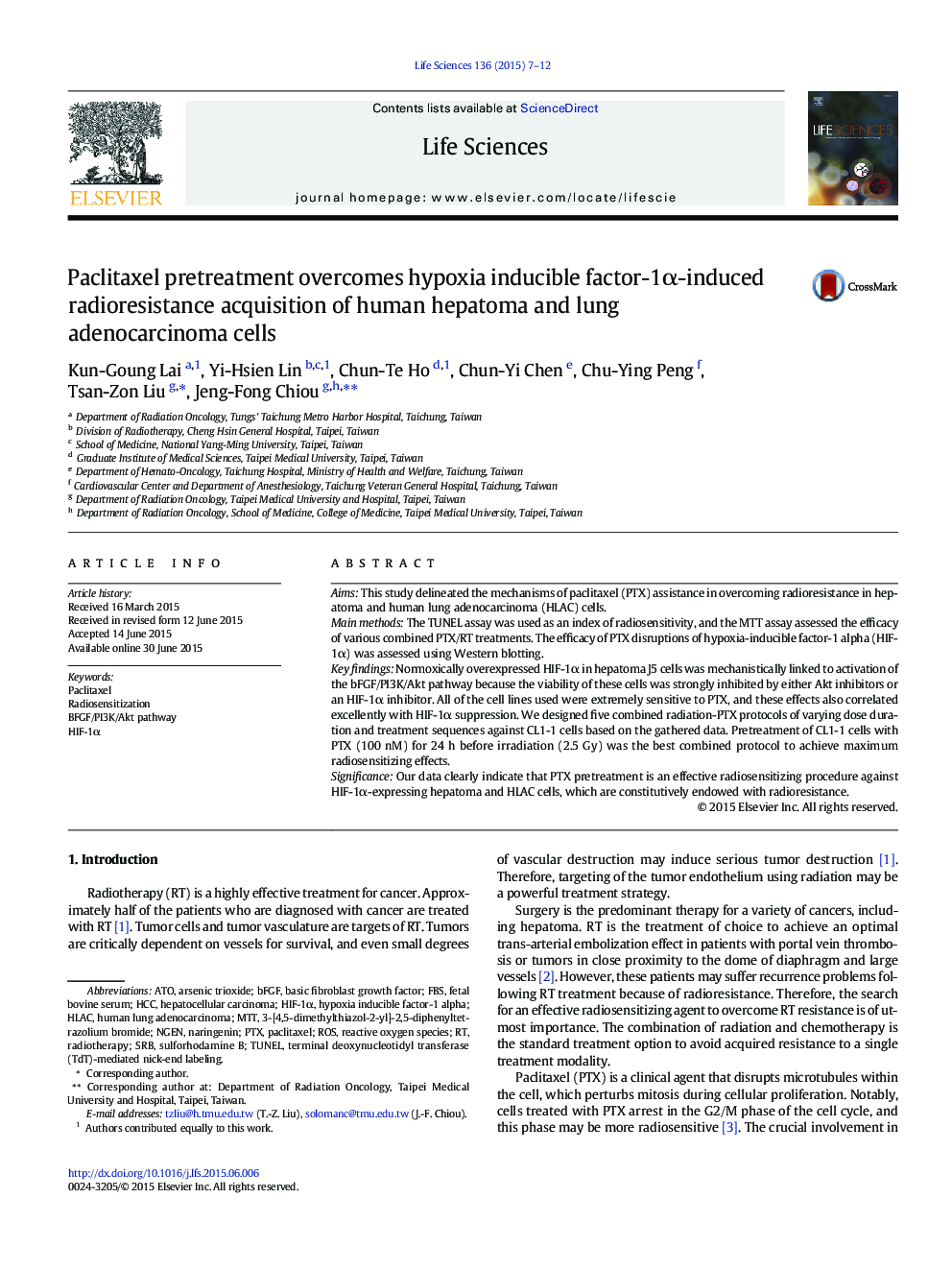| Article ID | Journal | Published Year | Pages | File Type |
|---|---|---|---|---|
| 2550863 | Life Sciences | 2015 | 6 Pages |
AimsThis study delineated the mechanisms of paclitaxel (PTX) assistance in overcoming radioresistance in hepatoma and human lung adenocarcinoma (HLAC) cells.Main methodsThe TUNEL assay was used as an index of radiosensitivity, and the MTT assay assessed the efficacy of various combined PTX/RT treatments. The efficacy of PTX disruptions of hypoxia-inducible factor-1 alpha (HIF-1α) was assessed using Western blotting.Key findingsNormoxically overexpressed HIF-1α in hepatoma J5 cells was mechanistically linked to activation of the bFGF/PI3K/Akt pathway because the viability of these cells was strongly inhibited by either Akt inhibitors or an HIF-1α inhibitor. All of the cell lines used were extremely sensitive to PTX, and these effects also correlated excellently with HIF-1α suppression. We designed five combined radiation-PTX protocols of varying dose duration and treatment sequences against CL1-1 cells based on the gathered data. Pretreatment of CL1-1 cells with PTX (100 nM) for 24 h before irradiation (2.5 Gy) was the best combined protocol to achieve maximum radiosensitizing effects.SignificanceOur data clearly indicate that PTX pretreatment is an effective radiosensitizing procedure against HIF-1α-expressing hepatoma and HLAC cells, which are constitutively endowed with radioresistance.
